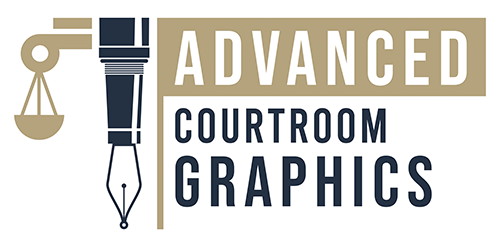3D animation is changing how homicide cases are presented in courtrooms. By providing visual aids for juries, these technologies help explain complex details of crimes. This article explores the rising use of 3D animation in trials, its legal implications, and how it’s shaping the future of forensic science.
The Rise of 3D Animation in Forensic Science
The Evolution from Traditional Methods
For many years, trial reenactments relied on actors or diagrams. Witnesses would describe what happened, often leading to misunderstandings. Traditional methods lacked precision. Performing a scene in real life could create more questions than answers. With 3D animation, you can recreate a scene with accuracy, showing every detail exactly as it happened.
Increased Accuracy and Detail
3D animation offers a clear depiction of crime scenes. It allows the jury to visualize timelines, distances, and movements. Animations can illustrate angles that are hard to convey through words. This level of detail provides a more comprehensive understanding of events.
Cost-Effectiveness and Time Savings
Creating a 3D animation can be more efficient than filming a live reenactment. Once the data is collected, animators can produce the visual for less money and time. Jurors save time on lengthy explanations. They can view the crime scene in a matter of minutes.
Legal Ramifications and Admissibility of 3D Animations
Judicial Acceptance and Precedents
Courts have recognized the potential benefits of 3D animation. Several cases have set precedents for their use in trials. Judges typically look for accuracy and clarity before accepting these animations as evidence.
Challenges to Authenticity and Bias
There are challenges related to how realistic the animations can be. Critics argue they may oversimplify or manipulate evidence. It’s essential for animations to remain faithful to the facts. Defense lawyers often question the authenticity, raising concerns about potential bias.
Expert Testimony and Validation
Expert witnesses play a key role in validating animations. They ensure the information presented is accurate and based on solid evidence. Expert testimony can help juries understand the animation’s role in the case.
Creating Effective 3D Homicide Reenactments
Data Acquisition and Modeling
Building a 3D animation starts with gathering data. Investigators collect photographs, witness statements, and physical evidence. This information forms the basis for accurate modeling.
Software and Technology
Cutting-edge software is essential for producing high-quality animations. The choice of software significantly affects the animation’s overall quality.
Collaboration with Forensic Experts
Collaboration with forensic experts ensures thoroughness. These professionals provide insight into the crime scene, helping animators make accurate representations. Their expertise is vital for rendering detailed scenarios.
Ethical Considerations and Potential Misuse
Avoiding Misrepresentation and Bias
The potential for misrepresentation exists. It is crucial to present evidence without bias. Animations should never manipulate facts to sway a jury.
Ensuring Transparency and Accuracy
Transparency is key. Animators must disclose methods used in creating the animations. This openness helps build trust in the evidence presented.
Protecting the Rights of the Accused and Victims
Ethical practices must protect everyone’s rights involved. The animation process should not compromise the dignity of victims or the accused. Fair representation is essential in maintaining justice.
Case Studies: Successful Applications of 3D Animation in Homicide Trials
High-Profile Cases and Outcomes
Several high-profile cases have effectively used 3D animations. These cases have shown how powerful visual aids can be in influencing jury decisions. For instance, notable trials involving violent crimes have benefitted from clear visual explanations.
Impact on Jury Perception and Verdict
Juries often respond positively to visual presentations. 3D animations provide a straightforward way to understand complex cases. Clear visuals can significantly impact how jurors perceive incidents and ultimately influence their verdicts.
Lessons Learned from Real-World Applications
Each successful application teaches valuable lessons. Continuous improvements in 3D technologies and processes help refine how animations serve justice. These insights guide future use and development.
Conclusion: The Future of 3D Animation in Criminal Justice
Key Takeaways and Best Practices
3D animation has a promising future in criminal justice. Its advantages include greater accuracy, enhanced juror understanding, and cost efficiency. Best practices must focus on transparency and ethical considerations.
Future Technological Advancements
As technology continues to evolve, so will the capabilities of 3D animations. Future advancements may enhance realism and interactivity, making presentations even more engaging.
Ethical Guidelines and Ongoing Debates
Debates over the ethical use of 3D animations will continue. Establishing clear guidelines will help safeguard against misuse while promoting their benefits in trials. Continued discussions will shape the right way to integrate this technology into criminal justice.
In summary, 3D animation stands to transform homicide trials, offering clarity and precision. By focusing on ethical practices and collaboration, the legal system can harness its full power to serve justice.
